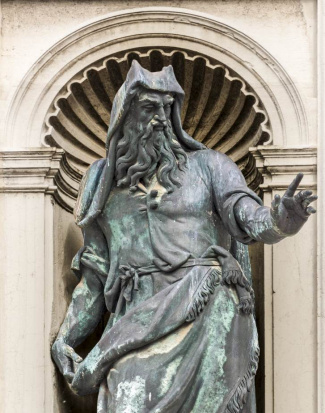Autumn 1406 B.C.
The Canaanites Initiate War
Numbers 21:1 - 3
Moses' sister Miriam, in the first Hebrew month of the fortieth year (spring 1406, Numbers 20:1), dies at Kadesh. Aaron, the High Priest, perishes four months later (middle of July, Numbers 20:23 - 28), joining his sister in death before the final set of wilderness wars.
King Arad the Canaanite, in the autumn of 1406, decides to go to war with Moses and the Israelites near Hormah. The city, whose name in Hebrew means "destruction," was likely located east of Beersheba. Arad strikes Israel and takes some of the people as prisoners (Numbers 21:1).
God's people respond to the attack by vowing to destroy all the Canaanite cities if they are helped in overcoming the enemy. God answers their prayers and gives his people the victory they requested (Numbers 21:2 - 3). Many of the Canaanite cities are completely destroyed in the war.
Late 1406
The Amorites Reject Peace
Numbers 21:21 - 31
After proceeding northeast and crossing the Zared River, which lies at the southern boundary of Moabite territory (Numbers 21:12, Deuteronomy 2:13 - 14), Moses and the Israelites proceed north until they reach the Arnon (Amon) River. They then camp near the river and request safe passage through Amorite territory from King Sihon (Numbers 21:21 - 22, Deuteronomy 2:26 - 29). The king is promised none of his crops, vineyards or water will be touched as they travel through his land.

Sihon not only refuses to allow safe passage of the Israelites he also initiates a war with them at Jahaz (Numbers 21:23)! The Israelites, with God's blessing, decimate the Amorites and take control of their land and possessions (Numbers 21:24 - 31, Deuteronomy 2:30 - 36). Moses also has Israel drive out the Amorites from the last remaining stronghold in Jazer (Numbers 21:32).
The territory between the Arnon River north to Hesbon is ultimately allocated to the tribe of Reuben, while from Hesbon to the Jabbok River is given to Gad as an inheritance (Deuteronomy 3:16, Joshua 13).
Late 1406
Battling a Giant King!
Numbers 21:33 - 35
The Israelites, after their war victory over the Amorites, continue to travel north on the eastern side of the Jordan River. They travel to the land of Bashan and are attacked, at Edrei, by King Og and his army (Numbers 21:33 - 35, Deuteronomy 3:1 - 7, 11). Moses, recounting all of Israel's events and wars during their wanderings in the wilderness, mentions what made Og a unique enemy.
For only Og king of Bashan remained of the rest of the giants (the Rephaim). Behold, his bedstead was a bedstead of iron . . . Nine cubits (roughly 13 feet or 3.9 meters) was its length, and four cubits (roughly 5.8 feet or 1.8 meters) its width . . . (Deuteronomy 3:11, HBFV).
Og, in spite of his gigantic size, is soundly defeated by God's people. He, his sons, and many of those who fought with him, perish. His land is confiscated by Moses and the Israelites. It is ultimately given to the half-tribe of Manasseh as an inheritance from God (Deuteronomy 3:13, Joshua 13:11 - 12).
End of 1406
The Last Battle
Numbers 31
The last war God wants Moses to execute, before his death, is against the Midianites. The people of Midian, at this time, were a semi-nomadic people who lived roughly east and southeast of Moabite territory.
This last battle was meant to punish Midian for its role in leading the Israelites astray by encouraging them to have relationships with pagan women. These relationships led many of God's people into idolatry and licentious behavior, ultimately leading to the Lord's wrath coming upon them (Numbers 25, 31:16). The Midianite who spearheaded this campaign to tempt Israel was the prophet Balaam.
Moses gathers 12,000 fighting men and sends them against Midian. The Israelites proceed to completely destroy the enemy. They kill all the men of war, slay all five Midianite rulers, take all the women and children captive, retrieve all the booty, and burn all their cities to the ground. They also kill Balaam who was willing to curse God's people for a fee (Numbers 31:1 - 10, see also 2Peter 2:15, Jude 1:11). This was all done without the loss of one Israelite soldier!
Moses dies on Mount Nebo in early 1405 B.C. (Deuteronomy 34:1 - 6). Soon after his death the people, four days before Passover (Joshua 4:19), cross the Jordan River into Canaan and end their forty years of wandering.